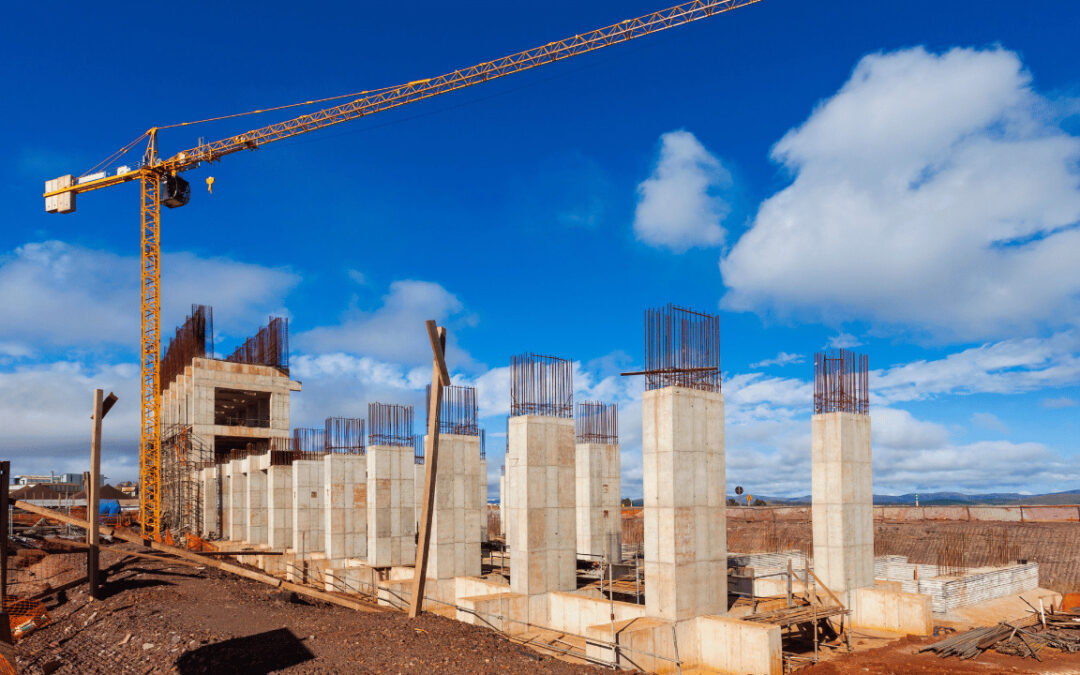In the heart of every bustling cityscape, towering above the streets, are the magnificent edifices that form the backbone of industry. These structures are more than just steel and concrete; they are the physical embodiments of human ingenuity and progress. Welcome to the world of industrial building construction, where dreams are forged into reality, and where the foundations of our modern world are laid.
Best Architectural Design Services
Table of Contents
Unraveling the Craft: What is Industrial Building Construction?
Before we delve into the intricacies of this fascinating field, let’s demystify what industrial building construction truly means. In simple terms, it is the art and science of erecting structures designed for industrial purposes. These can encompass factories, warehouses, power plants, and more. Imagine it as building the workhorses that power our economies.
The Blueprint: Planning and Design
Every successful venture begins with a blueprint. In the realm of industrial building construction, this is where the magic starts. Architects and engineers work hand in hand to conceptualize and design structures that not only meet functional requirements but also adhere to safety and environmental standards. It’s akin to sketching the skeleton of a building before adding the flesh.
Materials Matter: Choosing the Right Resources
Just as a chef selects the finest ingredients for a culinary masterpiece, construction professionals meticulously choose the materials that will form the backbone of the structure. Steel, concrete, glass, and a myriad of other components are carefully selected to ensure longevity, durability, and safety.
Laying the Foundation: Groundwork and Site Preparation
Before the first brick is laid, the site undergoes a thorough preparation process. This involves excavating, grading, and ensuring proper drainage. Think of it as preparing the canvas before the artist applies the first strokes of paint.
Rising Giants: Framing and Structural Systems
Once the groundwork is set, the structure starts to take shape. The framing and structural systems are akin to the bones and muscles of the building. Steel beams and concrete walls form the sturdy framework that will support the entire edifice.
Enclosing the Space: Walls, Roofing, and Insulation
With the skeleton in place, it’s time to add the skin. Walls and roofing materials are carefully selected to provide insulation, weatherproofing, and security. It’s like donning a coat to shield against the elements.
Powering Progress: Electrical and Mechanical Systems
An industrial building is a hive of activity, and to keep the wheels turning, a robust electrical and mechanical infrastructure is vital. This includes wiring, lighting, HVAC systems, and more. It’s the nervous system that powers the entire operation.
Aesthetics and Functionality: Interior Finishes
Beyond functionality, aesthetics play a crucial role in industrial construction. Interior finishes like flooring, paint, and fixtures are chosen to create a conducive work environment while also reflecting the brand identity of the occupant.
Safety First: Regulations and Compliance
Safety is paramount in any construction endeavor. Adherence to building codes, safety standards, and environmental regulations ensures that the structure not only stands tall but also provides a secure environment for its occupants.
The Final Touch: Quality Assurance and Inspection
Before the keys are handed over, a rigorous quality assurance process takes place. Inspections, tests, and checks are conducted to ensure that every nut, bolt, and beam meets the highest standards of quality.
Conclusion: Building the Future, One Beam at a Time
Industrial building construction is more than just a technical process; it’s a testament to human innovation and progress. From the initial concept to the final nail, every step is a testament to our ability to shape the world around us.
FAQs (Frequently Asked Questions)
Q1: How long does it typically take to complete an industrial building construction project?
A1: The timeline for an industrial construction project can vary widely depending on the size and complexity of the structure. Small projects may take a few months, while larger ones could extend over a year.
Q2: What are some of the key environmental considerations in industrial building construction?
A2: Environmental considerations in industrial construction include sustainable material choices, energy-efficient design, and waste management practices to minimize the project’s ecological footprint.
Q3: How do industrial builders ensure safety on construction sites?
A3: Safety is prioritized through rigorous training, regular safety meetings, the use of protective gear, and strict adherence to safety protocols and regulations.
Q4: Can existing industrial buildings be renovated or repurposed?
A4: Yes, existing industrial buildings can be renovated or repurposed to meet new requirements. This process, known as adaptive reuse, can be a sustainable and cost-effective option.
Q5: What role does technology play in modern industrial building construction?
A5: Technology has revolutionized industrial construction with innovations like Building Information Modelling (BIM), advanced machinery, and smart building systems, leading to increased efficiency and precision in the construction process.



Recent Comments